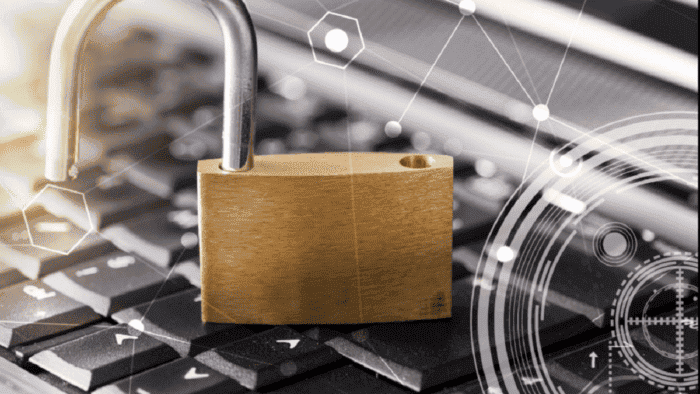In the present day, individuals with malicious intent employ a wide range of advanced techniques to gain unauthorized access to financial data, ultimately compromising their victims’ finances. Our objective is to examine the top five methods that are frequently experienced by users and to explore the most effective measures for safeguarding our bank accounts against these potential threats.
Guarding Your Finances: A Comprehensive Guide to Protecting Your Bank Accounts from Cyber Threats

Phishing/Smishing: The Prevalent Deceptive Technique
Phishing is a method that involves sending deceptive emails that mimic trusted sources, such as your bank, utility providers, the Post Office, or the Tax Agency. Smishing operates in a similar way but through mobile messages.
In both scenarios, these messages contain links that direct you to counterfeit websites resembling legitimate ones. Upon entering these sites, you’ll be prompted to input your personal and banking information, inadvertently handing it over to fraudsters.
To shield yourself from phishing, it is crucial to consistently verify both the sender’s email address and the URL included in the email, ensuring it displays the official domain and commences with ‘https://…’. In general, it’s advisable to refrain from clicking on links or downloading attachments from unsolicited messages.
Skimming and Card Cloning: A Financial Threat
Skimming is a method employed by cybercriminals, involving the installation of physical devices on ATMs or point-of-sale terminals to illicitly gather bank card data from unsuspecting victims. With this acquired information, fraudsters can then proceed to create clones of our cards.
To safeguard yourself from skimming, it’s essential to adopt a few precautions. Whenever you use an ATM or a point-of-sale terminal, diligently inspect the machine for any unusual devices or irregularities. Additionally, it’s a prudent practice to shield the keypad when entering your PIN to thwart hidden cameras from capturing it.
Banking Trojans: A Malware Threat
Banking Trojans fall within the realm of malicious software, crafted with the intention of infiltrating your personal computer or mobile device. They work by scanning files and surreptitiously extracting sensitive banking and financial information. Furthermore, certain banking Trojans have the capability to record the keystrokes you input (as explained below in the context of keyloggers), capture screenshots, and redirect your financial transactions to accounts controlled by cybercriminals.
To shield yourself from these banking Trojans, it is imperative to take specific precautions. Firstly, ensure that your operating system, web browser, and antivirus software are consistently kept up to date, as this fortifies your defenses against malware. Additionally, exercise caution and refrain from downloading files from sources that are unfamiliar or untrustworthy.
Man-in-the-Middle Attacks: A Covert Communication Interception
Man-in-the-Middle (MitM) attacks encompass a diverse array of sophisticated strategies in which cybercriminals clandestinely insert themselves between two parties engaged in communication, all without the knowledge of the communicating parties. One example is when they intercept and disrupt the interaction between your device and your bank’s website.
In a MitM scenario, the attacker can seize sensitive data like your banking credentials or even manipulate transaction data to divert funds into an account under their control.
Preventing MitM attacks involves employing secure connections, specifically HTTPS, which encrypts the communication between your web browser and the website. This encryption significantly complicates cybercriminals’ efforts to intercept information.
However, HTTPS is not foolproof, especially when you’re connected to an insecure Internet access point. It’s advisable to refrain from using public Wi-Fi networks for banking activities or any transactions involving confidential data. If there’s no alternative, consider using a Virtual Private Network (VPN) for added security.
Keyloggers: Silent Keyboard Spies
Keyloggers belong to the category of malware that, once they infiltrate your system (often through malicious downloads, phishing links, or the insertion of infected USBs), quietly record every keystroke you make on your keyboard. The captured information is then surreptitiously transmitted to cybercriminals. This insidious technique can amass confidential data ranging from passwords to bank account numbers and PINs.
To safeguard against keyloggers, similar precautions should be observed as with banking Trojans. Maintaining up-to-date antivirus software is paramount, and it’s vital to steer clear of downloading files from unfamiliar or dubious sources. Another safeguard involves using a virtual keyboard for inputting highly sensitive information. As keyloggers are unable to intercept data entered through an on-screen keyboard.

Other types of attacks that hackers use to sneak into your bank account
Cybercriminals employ various tactics to gain unauthorized access to bank accounts. Here are a few other types of attacks they use:
- Pharming: In a pharming attack, attackers compromise your device or network to redirect your web traffic to fraudulent websites that mimic legitimate banking sites. This can trick you into entering your login credentials and personal information.
- Credential Stuffing: Cybercriminals use previously stolen usernames and passwords to gain unauthorized access to your bank accounts. Exploiting the fact that many people reuse the same credentials across multiple services.
- Social Engineering: Attackers use psychological manipulation techniques to trick individuals into revealing sensitive information. This can include impersonating bank officials, friends, or family members through email, phone calls, or social media.
- Malware-Infected Emails: Cybercriminals send malicious emails containing attachments or links that, when clicked, can install malware on your device. This malware can capture your banking credentials and other sensitive data.
- Brute Force Attacks: In a brute force attack, cybercriminals repeatedly guess your login credentials until they find the correct combination. This method is more effective when people use weak or easily guessable passwords.
- ATM Skimming: Criminals place skimming devices on ATMs that capture card information when you insert your card. These devices are usually hidden and hard to detect.
- Vishing: Similar to phishing but conducted over the phone, vishing involves fraudulent calls from attackers who impersonate legitimate organizations, including banks, to extract sensitive information.
- Trojan Horse Attacks: Cybercriminals disguise malicious software as legitimate applications, tricking you into installing them on your device. Once installed, these Trojans can steal your banking information.
- SIM Card Swapping: Attackers convince your mobile carrier to transfer your phone number to a new SIM card in their possession. This can allow them to bypass two-factor authentication measures tied to your phone.
- Cross-Site Scripting (XSS): Cybercriminals inject malicious scripts into legitimate websites. Potentially capturing your login credentials and other personal data when you visit these compromised sites.
To protect your bank accounts, it’s crucial to stay vigilant, use strong and unique passwords, enable two-factor authentication, regularly update your software and applications, and be cautious about unsolicited communications and suspicious links or attachments.
Follow Gizchina.com on Google News for news and updates in the technology sector.





